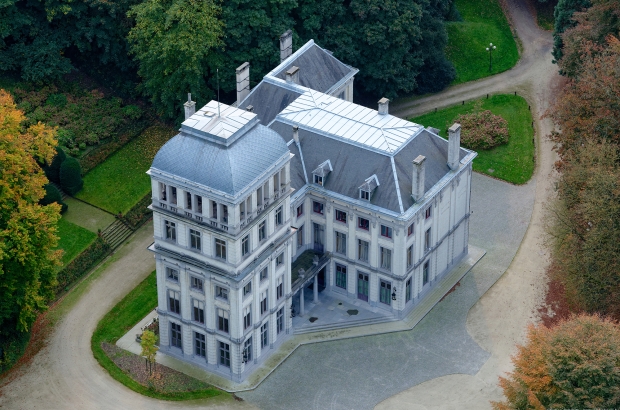- Daily & Weekly newsletters
- Buy & download The Bulletin
- Comment on our articles
Royal Trust properties valued at more than €230 million
After some 120 years, a figure has finally been put on the value of Belgium’s Royal Donation or trust, which was left to the state by King Leopold II.
The heritage, donated by Leopold II at the end of his life, in 1909, is estimated at €231 million, according to La Libre Belgique. This is the first time that such a figure has been revealed.
The king made three demands when donating his properties: that the territories and buildings cannot be sold, as they belong to the state, that some should keep their original function and appearance, and that they should be made available to the successors of the throne.
The real estate and properties offered to the Belgian state include two castles in Laeken: Belvédère, the current residence of King Albert II and Queen Paola, and Stuyvenberg, the birthplace of King Albert II and King Baudouin and – a scandal of the time – where Leopold I housed his mistress Arcadie Claret.
Another important castle is Val Duchesse in Auderghem. Here, in 1956, European leaders signed the European Treaty, later the Treaty of Rome. This act led to the creation of the European Economic Community - now the European Union - and Euratom, the European Atomic Energy Community.
But it is not only stately residences. The donation also includes multiple houses, offices, farms and even waterside rest homes in Ostend.
Few people know that some of the capital’s iconic properties and parks such as Ixelles’ Cinéma Vendôme or Forest’s Parc Duden also come from this fund. Further notable green spaces include the Tervuren Arboretum and many wooded areas in the Ardennes, worth €53 million.
The sale of wood and rental of residences and other offices has enabled the maintenance and renovation, at least in part, of these Royal Trust properties.
Ultimately, the real worth of this heritage is certainly underestimated. It is impossible to put a price on many of these historic monuments, that notably include the Chinese Pavilion and the Japanese Tower in Laeken, which were classified in 2019.
The first of these Asian curiosities was commissioned by Leopold II between 1901 and 1910. The monarch hoped the pavilion would become a luxury restaurant for businessmen wanting to forge links with China.
Meanwhile, the king was so taken with the Japanese Tower when he saw it at the 1900 International Exhibition in Paris, that he had it packed up and transported to its Laeken home.
After extensive and costly renovations in the 1980s, these Brussels icons opened again for business in the 1990s but closed again in 2013.
One plan to revive the monuments, now in a sorry state, has come from administrator Diane Hennebert, who was in charge of restoring the Atomium and the Villa Empain.
Currently head of ‘Out of the Box’, a centre for teenagers who do not do well in traditional schools, her idea was to turn the Chinese Pavilion into a space for exhibitions, conferences and private events. This is at least a more ambitious project than Brussels mobility and public works minister Pascal Smet’s proposal for a tea room.
Hennebert told VRT in November 2022 that, in Belgium, "we are stronger at destroying heritage than in making gaufres or chips".
She said: "We are the only [people] that have buildings of this quality in Europe and we are not doing anything with them.
"I was able to visit the Chinese Pavilion and I was horrified to see the state of degradation of this building."
Photo: Régie des Bâtiments


















